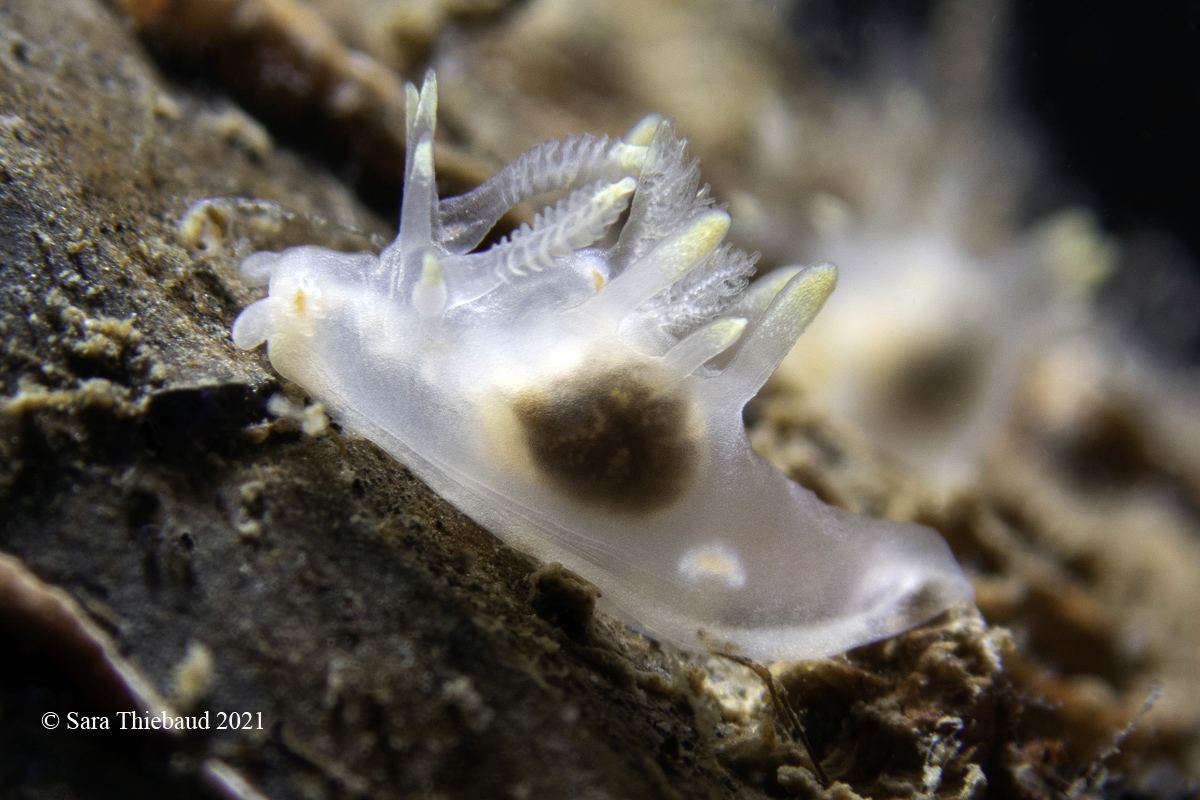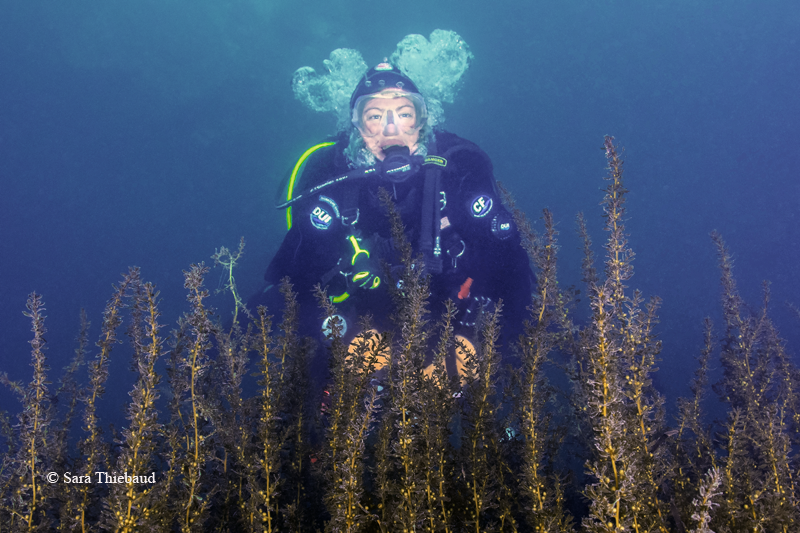 |
Image courtesy of Sara Thiebaud
Puget Sound, Washington
Image courtesy of Marc Chamberlain |
Ancula gibbosa (Risso, 1818) Originally described as a Tritonia, why I can't imagine, this little North Pacific species is not the most common critter in town. I have not seen it in years, since I found it in San Francisco Bay, and published my first "note" in "The Veliger" one of the best mollusk journals of its day. Now unfortunately gone. Ancula gibbosa is a circum-temporate species. For many years we referred to it as Ancula pacifica MacFarland 1905, on this coast Although found to be internally identical, the name gibbosa taking precedent, these two species were originally described based on quite different coloration, A. pacifica having three longitudinal orange stripes down the body, and A. gibbosa, lacking stripes and having white specks. While Sara's photo has neither, it is closest to the description of A. gibbosa, mentioned in Eastern Pacific Nudibranchs (page 51) as lacking both. This little dorid nudibranch has numerous extra-rhinophoral and extra-branchial appendages, Sara's being tipped in yellow. This species feeds on the entoproct, Barentsia, and is known along the Pacific coast from San Diego, California to Alaska. Reference: MacFarland, F. M. (1905). A preliminary account of the Dorididae of Monterey Bay, California. Proceedings of the Biological Society of Washington. 18: 35-54., |
Sara Thiebaud is an avid cold-water diver and nudibranch enthusiast. She is based in Seattle, WA, and enjoys looking for tiny invertebrates in the lovely Puget Sound. When not underwater, she works in vaccine research and can also be found cycling, knitting, and daydreaming about future dive travel! Sara uses an Olympus TG-6 with a Sea&Sea YS-03 strobe.
Send Sara email at sara.e.thiebaud@gmail.com
Dave Behrens
Sammamish, WA 98074
Apr., 2021
Send Dave email at davidwbehrens@gmail.com

Attention all you Sluggers, and you know who you are! The NSSI 2nd edition is now available in ebook PDF and book form . The hard back version will become available Nov. 1st. Both will cost $65 (individually). You will need to jump through a few hoops to get the electronic version as pdf distribution is protected by Adobe ID!! Please read the following to enable reading your electronic purchase! This new 2nd Edition is updated and reorganized, including 185 new species. Among other features, the new edition includes additional photographs of species, an identification key, and an up-to-date classification reflecting the latest evolutionary relationships. The Indo-Pacific represents the largest expanse of tropical ocean in the world, stretching from the Indian Ocean coast of southern Africa and the Red Sea to the central Pacific of the Hawaiian Islands, Easter Island and the Marquesas. This region supports the most diverse marine fauna of any place in the world for most groups of marine organisms. The nudibranchs and sea slugs are no exception to this rule; there are about 3,000 described species of these organisms in the world and at least 40% of these have been found exclusively in the Indo-Pacific tropics. This book illustrates 2,138 Indo-Pacific nudibranchs and sea slugs, including many undescribed species.
|

|
